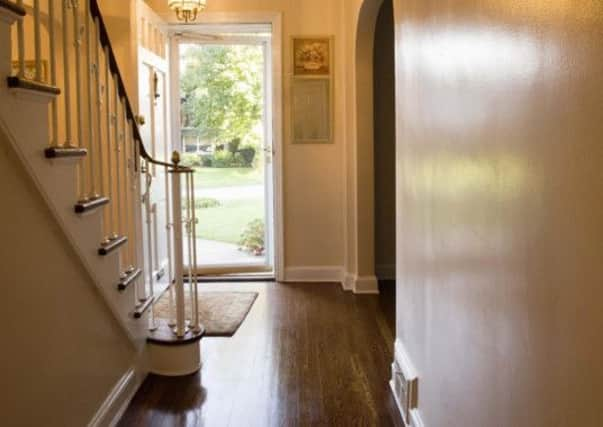Flooring visitors and buyers


Firstly, they can be draughty, because filling any small gaps or insulating underneath doesn’t always work well. Another problem with original floorboards is that they’ve often been patched up over the years with newer boards.
This obviously needs to be done if they’re in a bad state, but it can be hard to match old and new when you sand and stain them. Paint and dark stains work better than clear stains, or you can replace newer boards with reclaimed period ones.
Advertisement
Hide AdAdvertisement
Hide AdIf you don’t have period floorboards, or you don’t want to expose the boards you have, there are other options. Laminate flooring, which has a picture of wood printed on the boards, used to be the easiest and cheapest way to get the look, but it has really had its time - wooden flooring has moved on.
Instead, try solid wood flooring, or engineered wood, which is made up of layers, with a top layer of real wood. The thickness of the wooden layer varies (usually between about 0.6mm and 6mm), so make sure you know how thick it is and how many times, if any, it can be sanded.
A floor that can be sanded a few times is a good investment, as it can take more wear and tear. Because engineered wood consists of layers, it has more strength and durability than solid wood flooring and, unlike solid wood, it shouldn’t shrink and expand when exposed to changes in temperature and humidity either.
Most solid and engineered wood flooring is stained or vanished by the manufacturer, but you can also get bare solid wood if you want to treat or paint it yourself, either conventional floorboards (or parquet flooring) or boards that click together for easy fitting.
Advertisement
Hide AdAdvertisement
Hide AdWooden flooring is fashionable now, but it wasn’t too long ago that carpet was desirable in pretty much every room. Carpet makes a home cosy and comfy underfoot and is also less draughty, more heat retentive and more sound absorbing than many other floor coverings. While many carpets are suitable for use throughout the home, some have a more luxurious feel, perfect for light-foot-traffic areas like bedrooms, and others are more hard-wearing, ideal for heavy-foot-traffic areas like hallways.
The carpet’s pile affects its appearance, feel and performance, as does what it’s made of. A wool carpet is a quality carpet, but wool can be blended with nylon or polypropylene, usually to improve the carpet’s performance and make it more affordable. Wool carpets have lots of advantages, but nylon or polypropylene ones are often cheaper and more hard wearing
Another economical choice is vinyl flooring (sheet or tiles), which comes in a big range of styles and colours, including designs that look like tiles, wood, stone, etc, but usually cost less than the real thing. Vinyl’s not the most fashionable of floor coverings, but it is water resistant and durable.